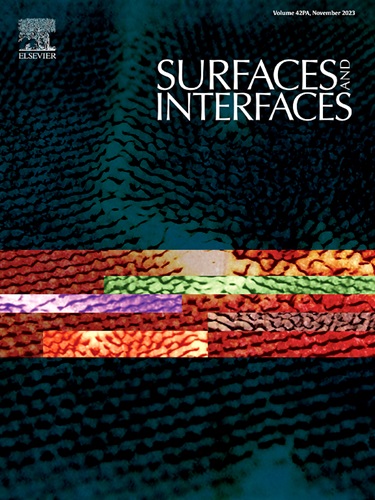Interface engineering of WS2/CoS2 heterostructure as a highly efficient electrode for hydrogen evolution reaction
IF 5.7
2区 材料科学
Q2 CHEMISTRY, PHYSICAL
引用次数: 0
Abstract
Transition metal sulfides electrodes based heterogeneous nanostructures have attracted much attention to be used as electrocatalyst for hydrogen evolution reaction (HER). Herein, a nanosheet arrays WS2/CoS2 heterostructure grown on copper substrate as HER electrocatalyst with high density of active sites was fabricated by a facile one-step hydrothermal method. In comparison to pristine WS2 and CoS2 electrocatalysts, the WS2/CoS2 heterostructure showed a high HER activity with a small overpotential of 252 mV to achieve a current density of 10 mA cm-2 in alkaline medium. Benefiting from the unique structure and synergetic effect between WS2 and CoS2, the resultant WS2/CoS2 electrocatalyst exhibits a large number of exposed heterointerfaces as highly abundant active sites, showing a fast charge transfer and a large electrochemical active surface area (ECSA: 52.75 cm2), which indicates a mutual relationship between interfacial engineering properties and electrocatalytic HER performance. Furthermore, the as-prepared WS2/CoS2 heterostructure retained its outstanding activity even after 1000 cycles, indicating excellent stability and notable durability toward HER. These fascinating characteristics via heterostructure engineering make the WS2/CoS2 electrocatalyst a remarkably effective and attractive candidate for future electrocatalytic hydrogen applications.

WS2/CoS2异质结构高效析氢电极的界面工程
基于过渡金属硫化物的非均相纳米结构电极作为析氢反应的电催化剂受到了广泛的关注。本文采用简单的一步水热法在铜衬底上制备了具有高密度活性位点的WS2/CoS2异质结构纳米片阵列作为HER电催化剂。与原始的WS2和CoS2电催化剂相比,WS2/CoS2异质结构具有较高的HER活性,过电位较小,为252 mV,在碱性介质中电流密度为10 mA cm-2。得益于WS2和CoS2的独特结构和协同效应,所制得的WS2/CoS2电催化剂具有大量外露的异质界面和丰富的活性位点,具有快速的电荷转移和较大的电化学活性表面积(ECSA: 52.75 cm2),表明界面工程性能与电催化HER性能之间存在相互关系。此外,制备的WS2/CoS2异质结构即使在1000次循环后仍保持了出色的活性,表明了优异的稳定性和显着的HER耐久性。通过异质结构工程,这些令人着迷的特性使WS2/CoS2电催化剂成为未来电催化氢应用的一个非常有效和有吸引力的候选者。
本文章由计算机程序翻译,如有差异,请以英文原文为准。
求助全文
约1分钟内获得全文
求助全文
来源期刊

Surfaces and Interfaces
Chemistry-General Chemistry
CiteScore
8.50
自引率
6.50%
发文量
753
审稿时长
35 days
期刊介绍:
The aim of the journal is to provide a respectful outlet for ''sound science'' papers in all research areas on surfaces and interfaces. We define sound science papers as papers that describe new and well-executed research, but that do not necessarily provide brand new insights or are merely a description of research results.
Surfaces and Interfaces publishes research papers in all fields of surface science which may not always find the right home on first submission to our Elsevier sister journals (Applied Surface, Surface and Coatings Technology, Thin Solid Films)
 求助内容:
求助内容: 应助结果提醒方式:
应助结果提醒方式:


